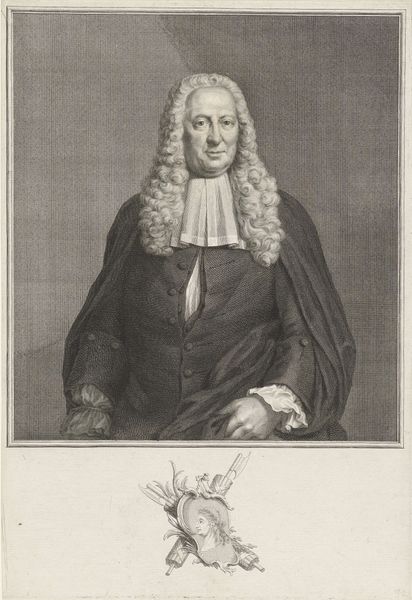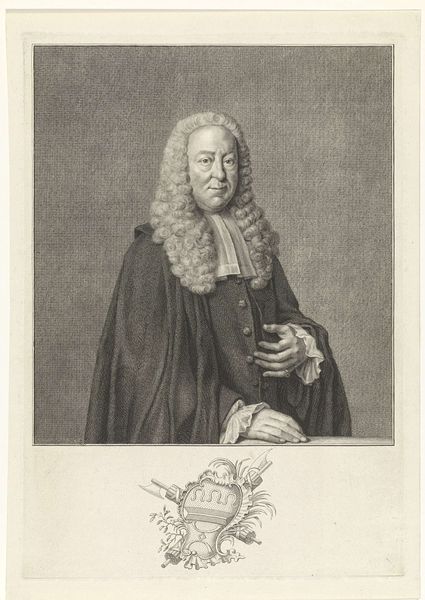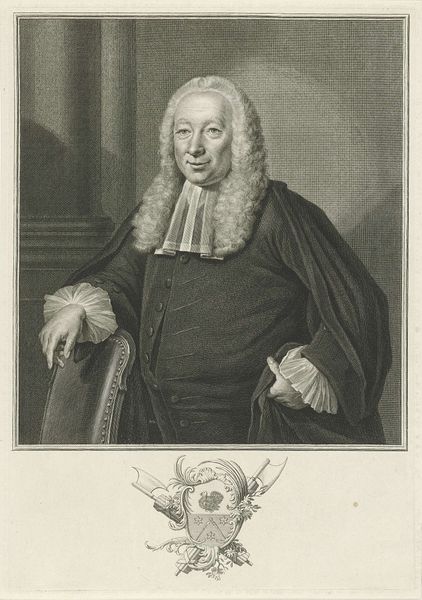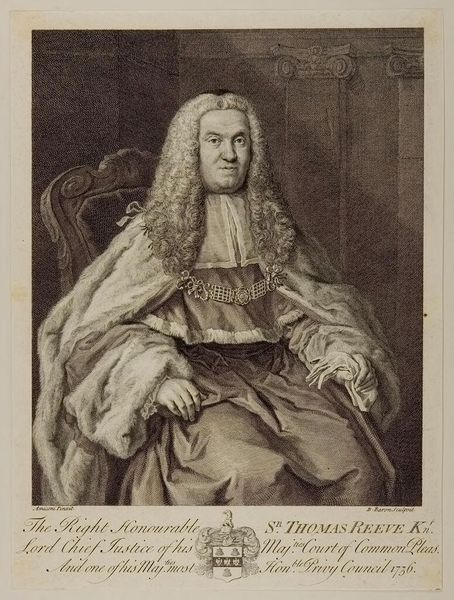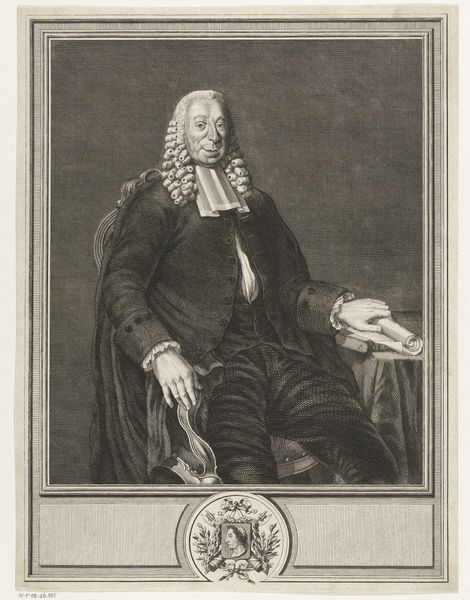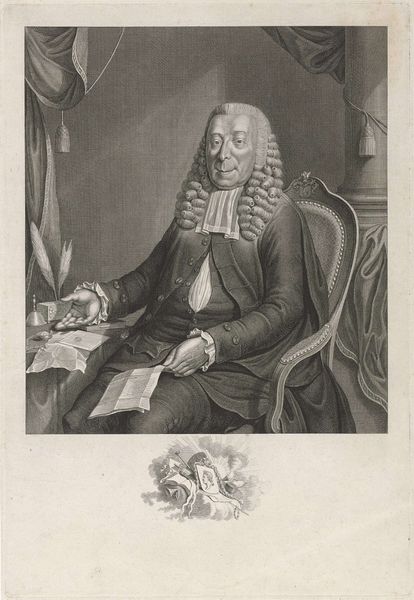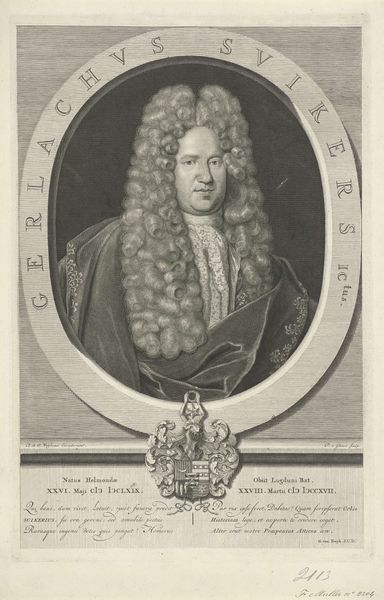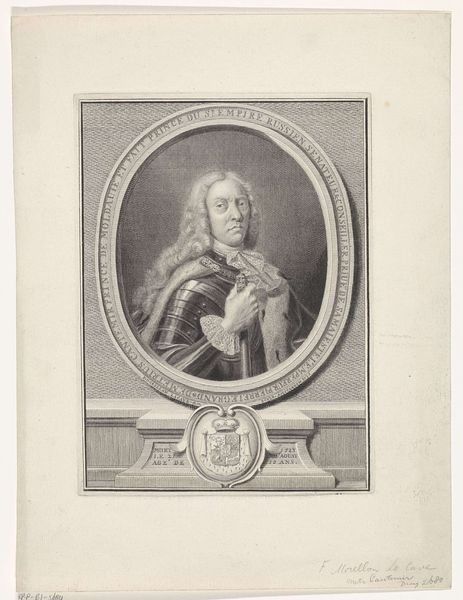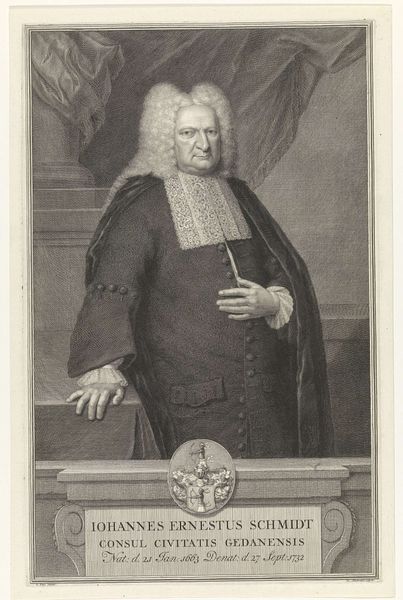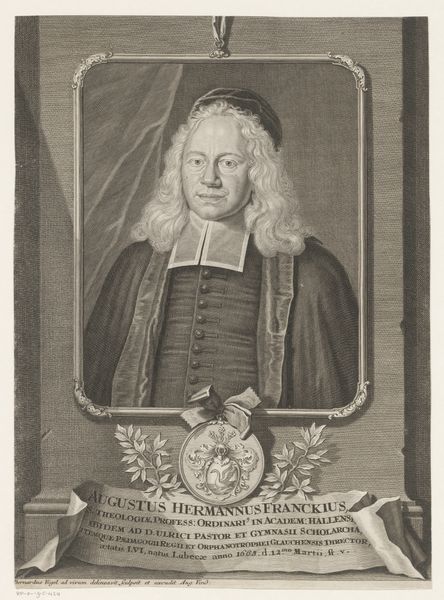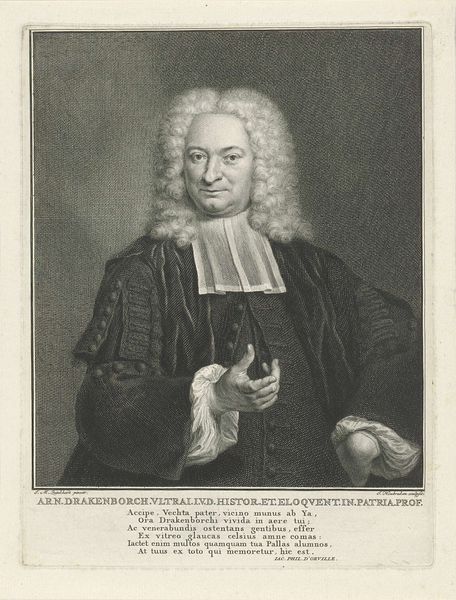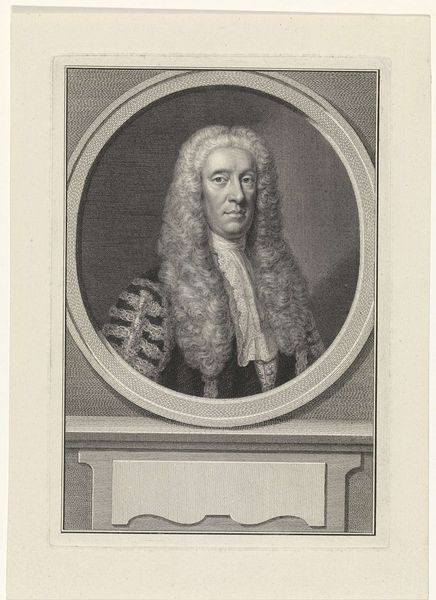
paper, engraving
#
portrait
#
baroque
#
charcoal drawing
#
paper
#
pencil drawing
#
engraving
Dimensions: height 369 mm, width 240 mm
Copyright: Rijks Museum: Open Domain
Editor: This is Jacob Houbraken's "Portret van Egbert de Vrij Temminck," made between 1758 and 1759. It's an engraving on paper and I am struck by the texture achieved in this medium. What can you tell me about the techniques used to create such intricate detail? Curator: Well, consider the context: engravings were a crucial technology for disseminating information and reproducing images. This portrait's existence speaks to a whole industry of printmaking, of labor and material processes. Houbraken, as an engraver, isn't just an artist; he's a skilled artisan operating within a specific social and economic framework. How does the texture inform your understanding of the labor involved? Editor: It seems incredibly labor-intensive, each line carefully etched. I wonder, were these engravings considered "art" in the same way paintings were, or were they primarily seen as functional objects? Curator: That's precisely the question! This pushes us to question the art/craft divide. Was Houbraken's skill elevated to "art" because it depicted someone of status? The choice of engraving – its reproducibility – democratizes the image of power while simultaneously reinforcing social hierarchy. The paper itself, too, wasn't just a neutral support; it represented a certain level of consumption. Editor: So the very materials used – the paper, the engraving tools – and the labor invested in them, speak volumes about the social status of both the artist and the subject. I'm starting to see how the printmaking process itself becomes a key element in understanding the artwork. Curator: Exactly! And understanding that material history adds another layer to the portrait. Considering it this way helps break down some of the traditional hierarchies associated with art history. Editor: This has definitely changed my perspective. It's not just about the sitter’s likeness, but about the whole process of production and how it reflects 18th-century society. Curator: Indeed, seeing art through a materialist lens, shifts the focus away from solely aesthetics, and towards understanding it as a product of material conditions and social relationships.
Comments
No comments
Be the first to comment and join the conversation on the ultimate creative platform.
